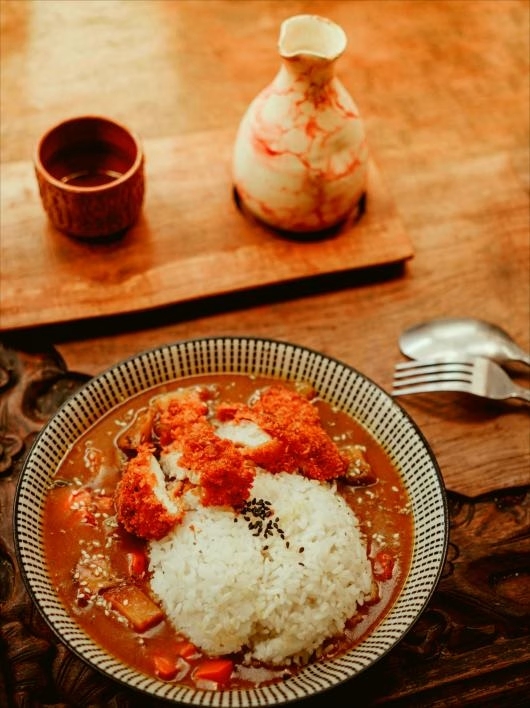Common Japanese dishes like sake, miso, and soy sauce are all delicious creations fermented with koji fungi. What is Rice Koji?Why does koji ferment rice and soy products? What are the steps involved in brewing sake and amazake?
Without koji, there would be no Japanese kitchen.
For millennia, rice has been a staple food in many regions around the world and has played a quiet but crucial role in the creation of many beloved fermented products. This is because rice is a perfect breeding ground for mold.
In Western kitchens, mold growth on food is often immediately discarded. However, not everyone is so critical of mold spores. Rice infested with Aspergillus oryzae (a cultivated fungus) has been instrumental in the creation of countless fermented foods in Asia.
The uses of koji are countless.
The rice Koji fungus and the grains it infests are collectively known as “koji” (meaning “blooming fungus flower”) in Japanese. Koji makes things easy, at least in traditional Japanese cooking. Food writer and chef Yukari Sakamoto once said, “Without koji, there would be no Japanese kitchen.” Koji’s uses are countless, and miso, soy sauce, and sake all require it. Koji’s strength lies in its ability to break down the starches in rice and soybeans, promoting their fermentation.
Koji Making Method
While cultivating koji doesn’t require a long process, it requires meticulous attention and perseverance. It’s not like simply throwing sauerkraut into a vat and calling it a day. Koji is made by inoculating steamed white rice with koji seed. A koji spreader is typically used to sprinkle a layer of fungal spores over the new rice. Some traditional koji makers even sing to the koji bed while spreading the koji.
The mixed rice is then left in a warm place overnight, stirred, and allowed to rest again overnight. The finished product is a cluster of rice grains, each covered in fine white mycelium that exudes a sweet aroma, reminiscent of expanded rice. Tasted individually, it has a light, refreshing sweetness.
History of Koji
The earliest written record of Koji dates back to China over 2,000 years ago. Koji rice was introduced to Japan approximately 1,300 years ago, where it spread widely. Geneticists have studied Koji strains from across Asia, along with their closest wild relatives, to further understand the fungus’s history. They have discovered that all current strains share a common ancestor, likely originating from a single early artificial cultivation.
Humans have a long history of using Koji fungi in a wide variety of foods, resulting in the development of specialized strains for various applications. For example, sake Koji is adept at breaking down the protein in sake rice, but less effective at breaking down soy protein. Therefore, compared to koji seeds that have evolved to make miso or soy sauce, using sake koji for these two products is less effective.
Japanese Sake Brewing Method
Traditional sake brewing involves washing and steaming white rice, then inoculating it with a suitable koji seed. Once successfully inoculated, the steamed rice is mixed with water to create a fermented moromi. Once fermentation is complete, the moromi is poured into a cloth bag and pressed to separate the filtered sake from the cake-like lees (which can be used as a base for pickling).
Most sake today is made using a more mechanized process and is pasteurized at high temperatures. However, some unpasteurized sake can still be found, containing microorganisms.
Japanese Amazake Drink
Besides its crucial role in sake brewing, koji is also used to make amazake, a sweet fermented rice drink. Most commercially available amazake is boiled to sterilize the drink and halt the fermentation process (otherwise, it would turn the sweet drink into an alcoholic one).
However, amazake can be consumed before boiling, when it still contains microorganisms. It’s often served as a dessert at festivals or as baby food, and it’s a popular sweetener in Japan. It’s not only traditional but also healthier than refined sugar. Moromi (a type of moromi) can even be used as a culture medium for pickling fruits and vegetables.
Making amazake at home is relatively easy if you have koji (available at some Asian markets) and an electric rice cooker. First, cook rice porridge in a rice cooker, then add the koji and a small amount of water, and leave uncovered to ferment. More discerning individuals can purchase a strain of koji that they find most suitable.
Elizabeth Adachi’s recipe for rice koji and black sesame smoothie
Japanese amazake can be purchased at specialty stores and stored in the refrigerator. Elizabeth Adachi. Adachi, an American food writer and chef living in Tokyo, cleverly incorporates koji rice into various dessert recipes, like this iced treat.
The ingredients are simple: amazake (sweet sake), black sesame paste, and soy sauce (unpasteurized is preferred). The only tools needed are a blender and a freezer-safe container with a lid.
Instrution
- Blend 1 cup of amazake in a blender.
- Add 1/4 cup of black sesame paste and blend with the amazake.
- Add 1/4 teaspoon of soy sauce and blend again until the mixture resembles a dark ice cream.
- Pour the mixture into a covered container and tap it on the countertop to release any air bubbles.
- Cover the container and freeze it for at least 4 hours.
- Then you can dig in and enjoy.


Leave a Reply